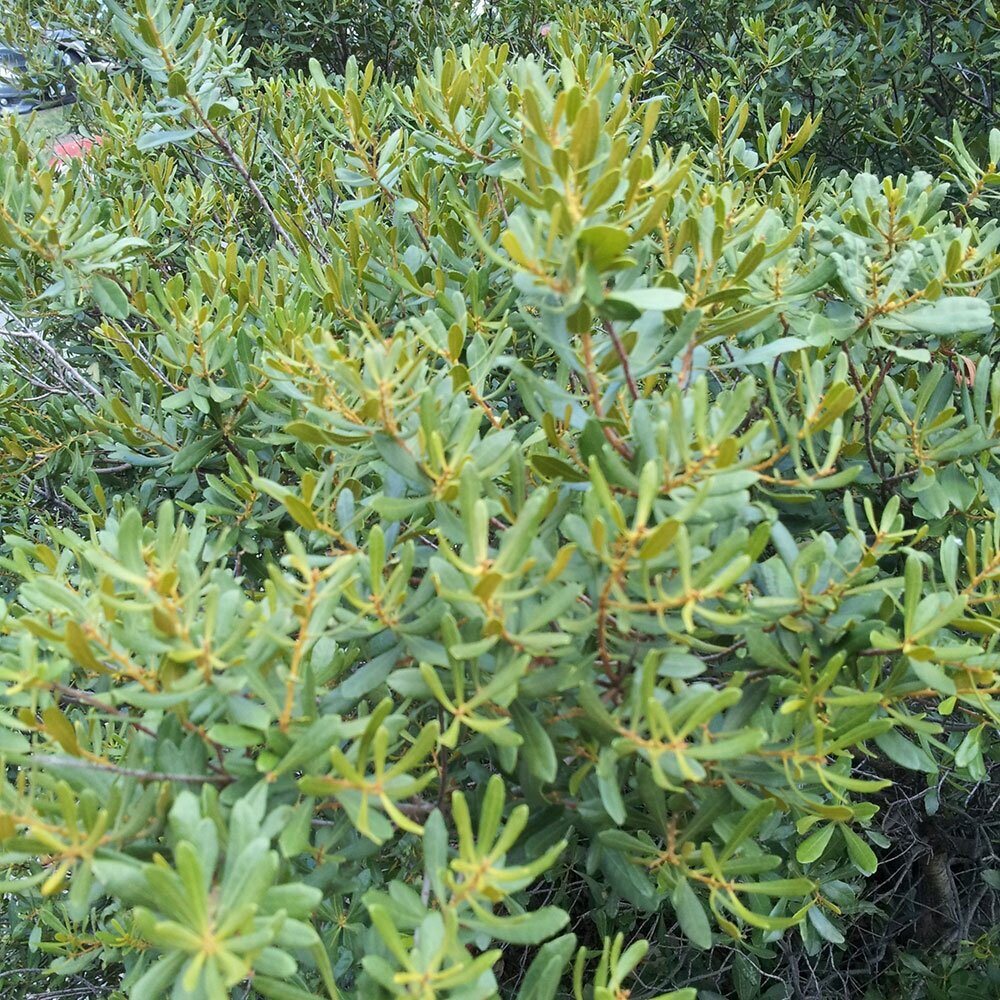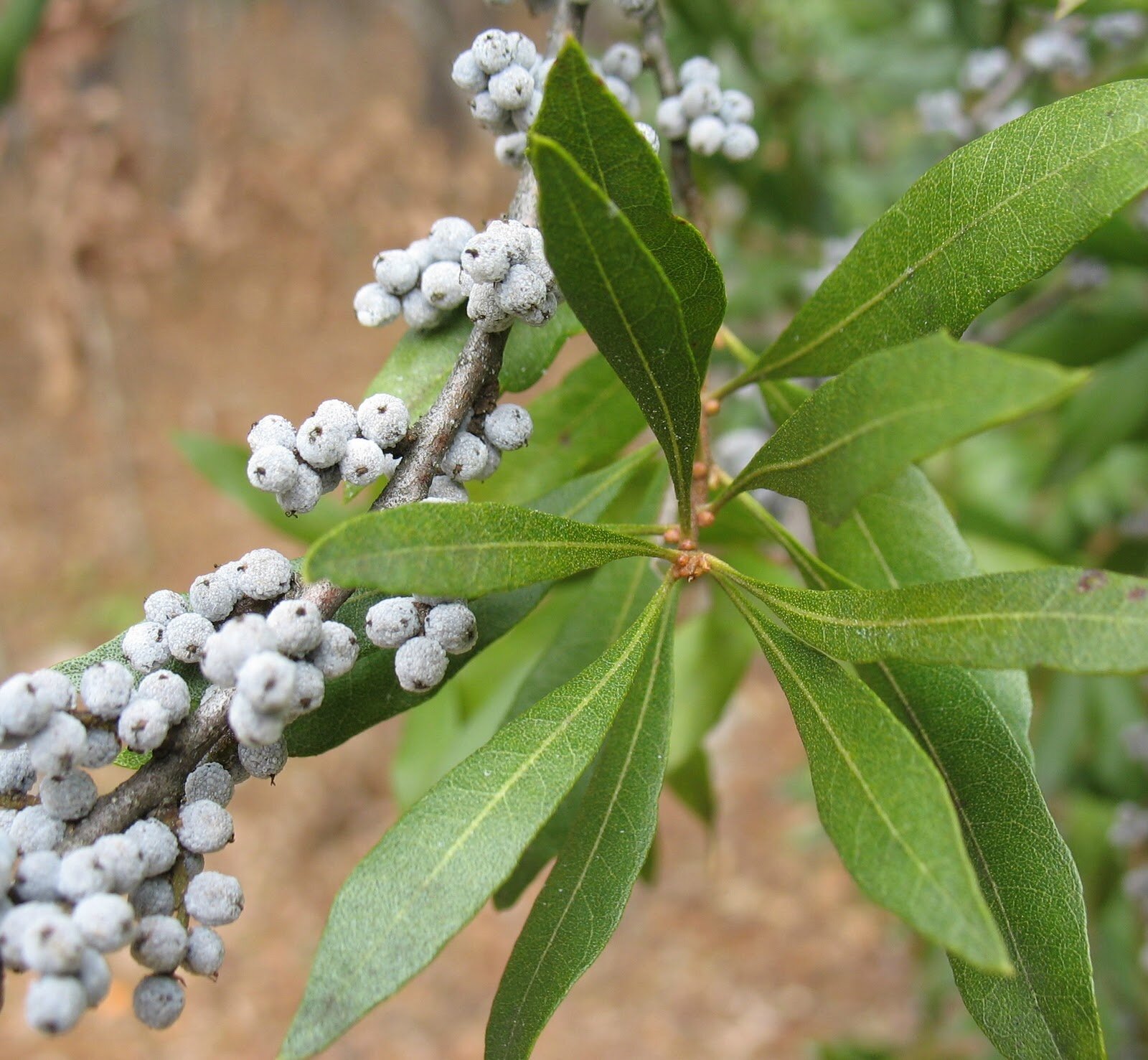Wax Myrtle
Tree Stories -- Wax Myrtle—A quiet Survivor
Many of us have spent recent weeks watching trees and other landscape plants for signs of life. Some are almost back to normal, but many are slow to recover. We’ve given up on a few and piled their branches for trash day. Our magnificent magnolias, and even the invasive camphor, never dropped a leaf. There have been a few surprising survivors that had not received much previous attention. One is the unassuming wax myrtle (myrica cerefera), also known as southern bayberry. These small trees did well through the February icebox and are in full spring growth.
Wax myrtle is a fast-growing small evergreen tree or large shrub that can reach up to 20 feet tall under ideal conditions. It is often multi-trunked but can be pruned to a single trunk. The glossy light green 2-4 inch leaves are aromatic, with a spicy bayberry fragrance when crushed. Unpretentious spring flowers are followed by clusters of small blue-grey berries that appear in late summer and persist through winter on pollinated female plants.
The tree is native from the eastern USA into east Texas, and as far south as Central America and much of the Caribbean. It is often found along streambanks and in wet areas. Wax myrtles are widely used in landscapes as screens, hedges, in wetland gardens, and for habitat restoration. Bacteria on root nodules convert nitrogen in the soil to a form available for plant nutrition.
This durable tree is tolerant of high winds, waterlogged soils, and salt spray and may be grown in seaside areas. It likes sun but will accept partial shade and a variety of soil conditions. It requires regular moisture initially but once established it is it is drought- and flood-resistant. It can handle urban confinement within paved areas.
Wax myrtles have several additional useful qualities. The wax-covered fruits have been used for centuries to make bayberry candles, soaps, and sealing wax. Leaves can be used for seasoning meats and stews and as a tea. Native Americans boiled root bark to treat fevers, Louisiana colonists used it to treat dysentery, and it is still used to treat a variety of ills due to reported medicinal properties. Crushed leaves are reported to be a mosquito repellent.
Wax myrtle also has importance to wildlife. Many songbirds and other feathered friends enjoy the berries, and trees provides excellent cover in winter and extreme weather. Leaves are a larval host for the Red-Banded Hairstreak butterfly. Flowers provide nectar for honeybees and other pollinators. Wax myrtles often grow along fence rows as birds do a lot of seed planting; their digestive systems remove the berry’s waxy coating to allow for seed germination.
The wax myrtle can be a fine addition to home landscapes seeking a screening hedge, wind buffer, or an area providing habitat for wildlife. They are tough and easy to care for and are attractive year round. Dozens have been provided through the Tree Conservancy. Find yours in the nursery trade or start one from stem or root cuttings.
Photo caption:
“Tree Stories” is an ongoing series of articles about outstanding Island trees, tree care, and tree issues. Margaret Canavan is a Galveston resident, a Galveston County Master Gardener, and a member of the Galveston Island Tree Conservancy Board.




